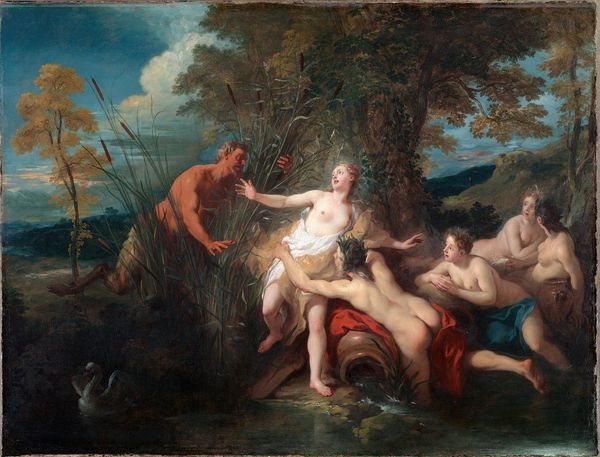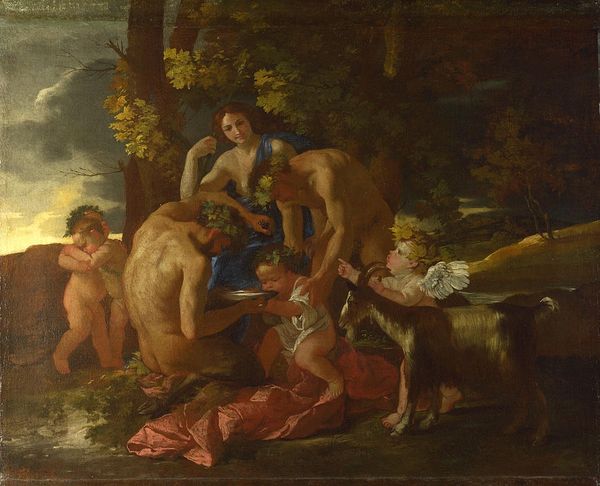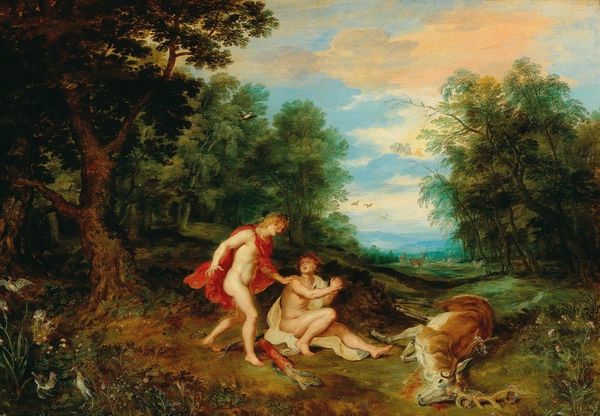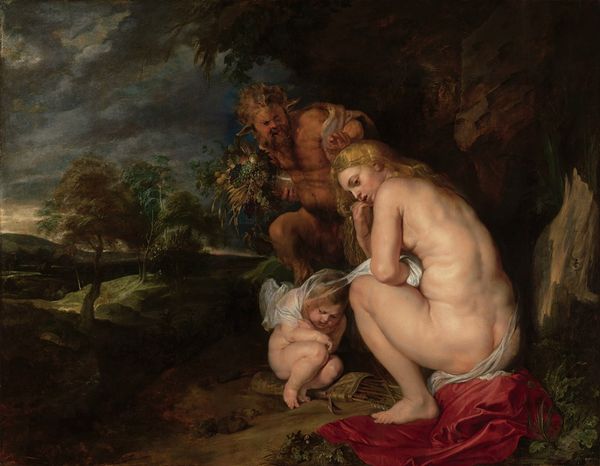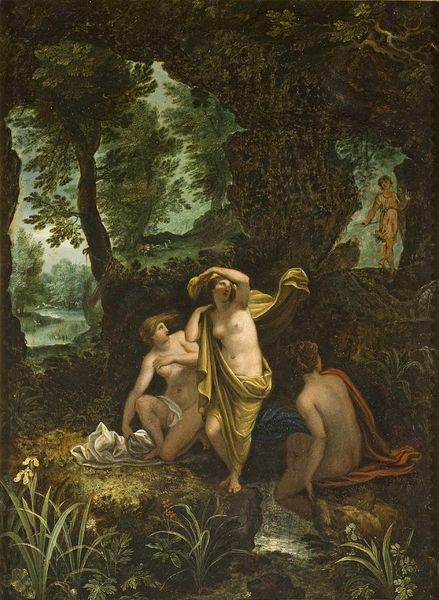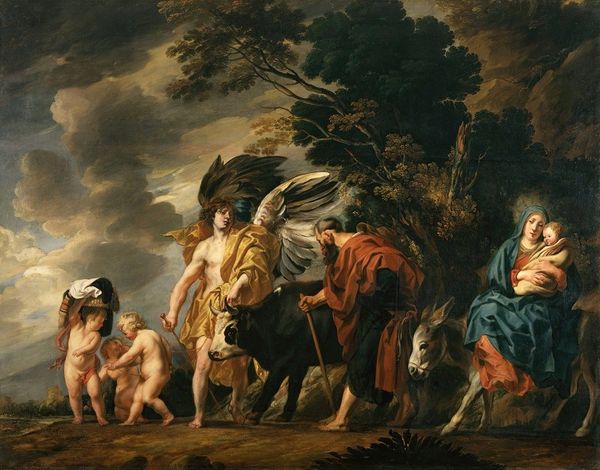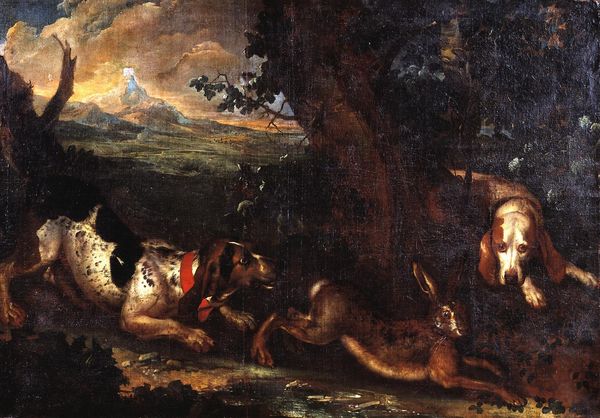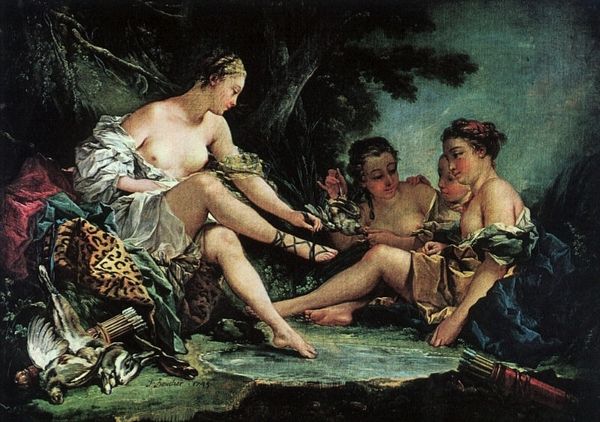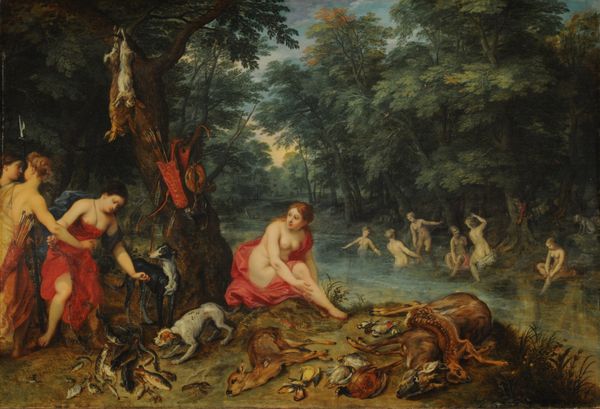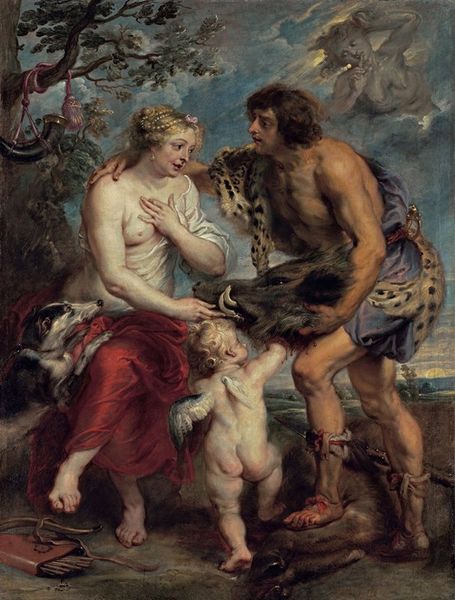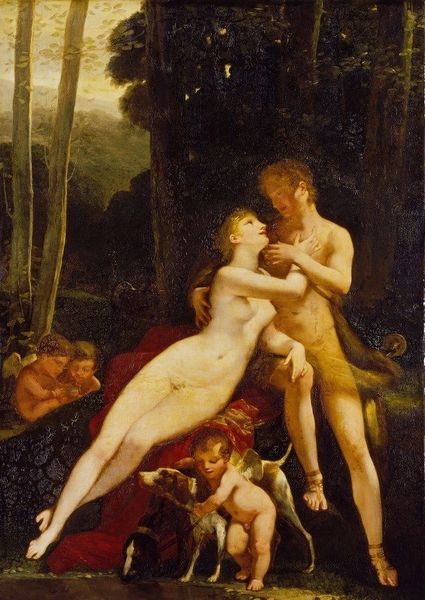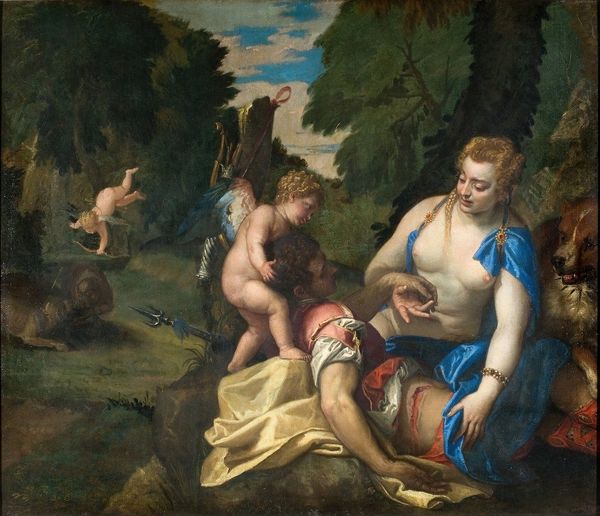
oil-paint
#
allegory
#
baroque
#
oil-paint
#
landscape
#
figuration
#
oil painting
#
mythology
#
history-painting
Copyright: Public Domain: Artvee
Curator: Let’s take a moment to appreciate "Romulus and Remus," a dramatic oil painting created between 1615 and 1616 by Peter Paul Rubens. Editor: It's striking how Rubens contrasts the tenderness of the infants with the potential threat suggested by the wolf and the dense, wild landscape. There's a push and pull between safety and danger in this scene. Curator: Absolutely. The earthy tones and robust brushwork are quintessential Rubens. We should consider the social context. Rubens, celebrated for his workshop system, efficiently produced vast amounts of paintings with his assistants. It begs the question, how much of this canvas is actually by Rubens' hand and how much is collaborative labor? Editor: That’s a good point. Yet, consider the enduring power of the wolf as a symbol. From ancient Rome, where the she-wolf embodies the maternal strength and resilience of the city's founders, to modern interpretations, the image persists. Curator: But even the availability of pigments during this period would significantly determine the hues of this piece. The source of each material from specific geographies shapes its value in Europe, making this history crucial. Editor: It goes deeper than pigment sources; the twins themselves represent primal origins, but also the duality of human nature: the capacity for both civilization and savagery. We see this internal conflict played out time and again in Roman history. Curator: And Roman history becomes material, not just through their buildings, but through art pieces such as this oil on canvas work. By analyzing this period of intense material transformation, it reveals itself to us through Rubens' workshop, pigment availability, canvas weaving and trading of materials. Editor: Rubens masterfully wove this symbolic narrative and visual story together to emphasize how intertwined we are with symbols from the past and continue forward. Curator: I agree, and Rubens was indeed skilled at maximizing the available means to realize these ambitious paintings and continue production on such a grand scale. Editor: Thinking about "Romulus and Remus," it's more than just a depiction of mythology; it is a window into cultural memory. Curator: From my vantage point, considering production methods, materials and markets adds more layers of meaning and cultural understanding than an individual painting can convey on its own.
Comments
No comments
Be the first to comment and join the conversation on the ultimate creative platform.
